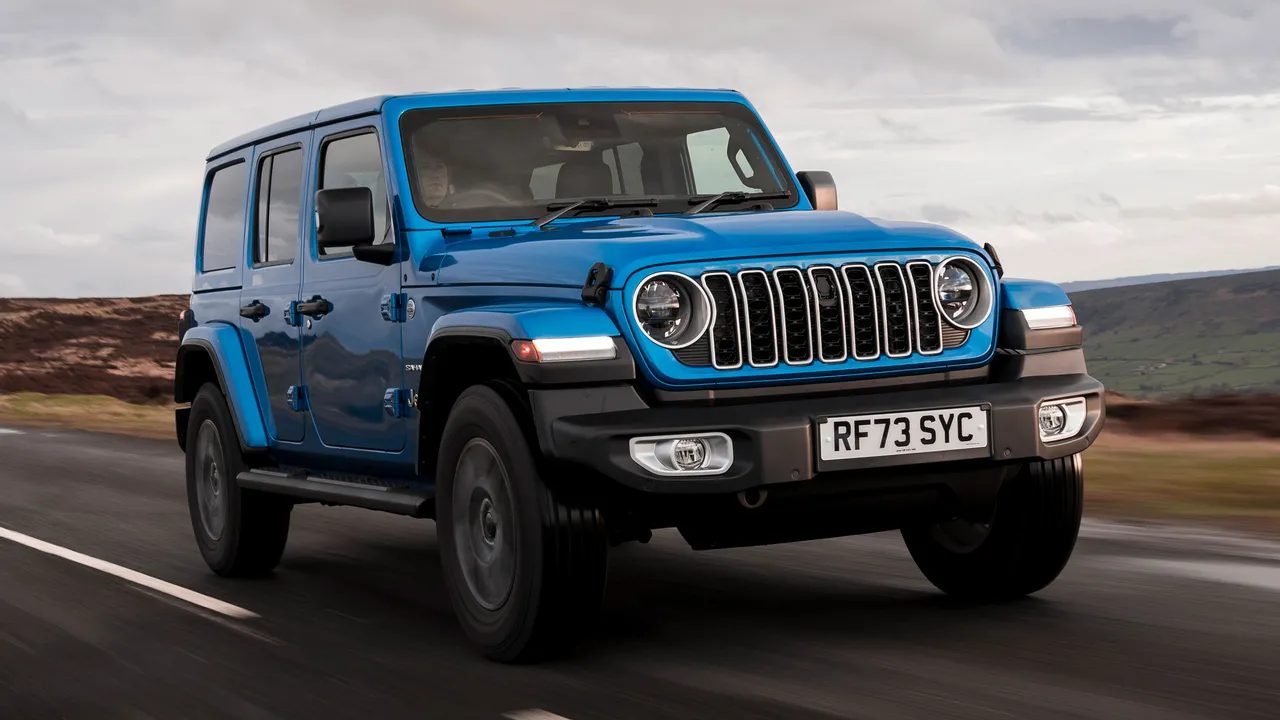Jeep India, a brand that has carved a niche in the Indian automotive market with its rugged, off-road legacy, is facing significant sales pressure. The Jeep Compass, which was once hailed as the brand’s flagship offering in the compact SUV segment, has been struggling to maintain its momentum. Despite its strong brand heritage and the appeal of its rugged design, the Compass has been facing a decline in sales, leaving the company with questions about its future in the Indian market. This article explores the challenges Jeep India faces as its Compass model stalls and what the brand can do to reclaim its position in the competitive SUV landscape.
1. Increased Competition in the Compact SUV Segment
One of the primary reasons behind the sluggish sales of the Jeep Compass is the fierce competition in the compact SUV segment. Over the past few years, this segment has become one of the most hotly contested in the Indian automotive market, with numerous players offering a wide variety of options for consumers. Leading the pack are popular models like the Hyundai Creta, Kia Seltos, Tata Harrier, and the MG Hector, which have gained significant market share with their well-rounded features, competitive pricing, and strong brand presence.
In comparison, the Jeep Compass, despite its premium appeal and off-road credentials, faces challenges in offering the same level of features, technology, and value for money that competitors deliver. Consumers are increasingly looking for well-equipped SUVs with advanced tech, connectivity, and a premium feel—areas where Jeep has struggled to keep pace with rivals. The Compass, while offering robust driving capabilities, may not fully meet the diverse expectations of today’s SUV buyers.

2. Pricing and Value Perception
Another critical factor contributing to the decline in Jeep Compass sales is its pricing strategy. The Compass is positioned as a premium offering in the compact SUV category, and its price tag reflects that positioning. However, for many buyers, especially in a price-sensitive market like India, the premium price of the Compass might not align with its perceived value.
While the Compass offers excellent build quality, off-road capabilities, and a solid driving experience, it falls short in certain areas compared to its competitors, particularly in terms of infotainment features, interior design, and overall refinement. Models like the Hyundai Creta and Tata Harrier are priced similarly but provide a more compelling package with modern features, making it harder for the Compass to justify its premium price.
The perception of high pricing without a commensurate value offering could be pushing potential buyers to explore alternatives in the same segment that offer better features and more affordable options.
3. Limited Powertrain Options
The Jeep Compass offers a range of engine options, including petrol and diesel variants, along with a 4×4 system. While this offers some versatility, it lacks the diversity and customization options that some of its competitors provide. For instance, rivals like the Hyundai Creta and Kia Seltos offer hybrid options, which are becoming increasingly popular among Indian consumers due to their better fuel efficiency and lower environmental impact.
In a market where consumers are increasingly becoming environmentally conscious and looking for more fuel-efficient vehicles, Jeep’s limited powertrain options may not be enough to attract a broader audience. As the Indian automotive industry gradually shifts towards electric and hybrid mobility, Jeep may need to reconsider its powertrain strategy to remain competitive.
4. Perceived Lack of Innovation
While the Jeep Compass boasts rugged styling and an impressive driving experience, some buyers have expressed concerns that the model has not seen enough innovation in recent years. The compact SUV segment is fast evolving, with new technologies and features being introduced at a rapid pace. From larger infotainment screens to advanced driver-assistance systems (ADAS), today’s consumers expect a high level of technology integration in vehicles.
Unfortunately, the Compass, which was last updated with a facelift in 2021, has been criticized for lacking cutting-edge features that consumers increasingly demand. In comparison, competitors in the segment have introduced newer, more sophisticated technologies such as wireless charging, connected car features, and enhanced infotainment systems. Jeep needs to address this perceived lack of innovation to keep the Compass relevant and competitive in a segment that values modern technology.
5. Brand Positioning and Customer Base
Jeep has traditionally been associated with rugged off-road vehicles that appeal to adventure-seekers and enthusiasts. While this brand image has worked well for the company globally, it may not be fully resonating with Indian buyers, especially in the compact SUV category. Indian consumers tend to prioritize features such as comfort, technology, and fuel efficiency over pure off-road capability.
The Compass, despite being a well-built vehicle with strong off-road credentials, may not be able to cater to the mass-market appeal that Indian buyers desire in a compact SUV. Jeep may need to re-position the Compass as a more well-rounded vehicle, balancing off-road capability with features that are more in line with the average buyer’s daily needs.
6. Supply Chain and Production Challenges
Jeep India, like many other automakers, has been facing supply chain challenges, particularly due to global shortages in semiconductor chips and other key components. These shortages have led to production delays and reduced inventory levels, which can result in longer waiting periods for customers. With limited availability of the Compass, potential buyers may be turning to more readily available alternatives, thereby impacting Jeep’s sales performance.
Additionally, the ongoing challenges related to logistics and manufacturing efficiency in India may further hinder Jeep’s ability to meet the growing demand for compact SUVs, ultimately affecting the brand’s market share.
7. The Path Forward for Jeep India
To overcome its current sales slump and regain traction in the Indian market, Jeep India needs to refocus its strategy on multiple fronts. A key area of improvement would be to introduce more advanced technologies and features in the Compass, especially in terms of connectivity and safety features. Enhanced infotainment systems, advanced driver assistance systems (ADAS), and hybrid powertrain options could make the Compass more appealing to a tech-savvy, environmentally-conscious audience.
Additionally, Jeep may need to reconsider its pricing strategy to make the Compass more competitive with its rivals, without sacrificing its premium positioning. Offering more affordable variants with better value for money could help attract a broader consumer base.
Expanding its dealer and service network, addressing supply chain issues, and improving customer experience at touchpoints will also be crucial for rebuilding trust and loyalty with Indian buyers.
Conclusion
Jeep India’s struggles with the Compass model reflect the pressures faced by global automotive brands trying to make a mark in India’s highly competitive compact SUV segment. While the Compass offers great driving dynamics and off-road capabilities, it has faced challenges in terms of pricing, value perception, and a lack of innovation compared to its rivals. By embracing technological advancements, rethinking its pricing strategy, and better aligning itself with the preferences of the Indian consumer, Jeep India can regain its foothold in the market and continue to build on its legacy of rugged and reliable vehicles.







